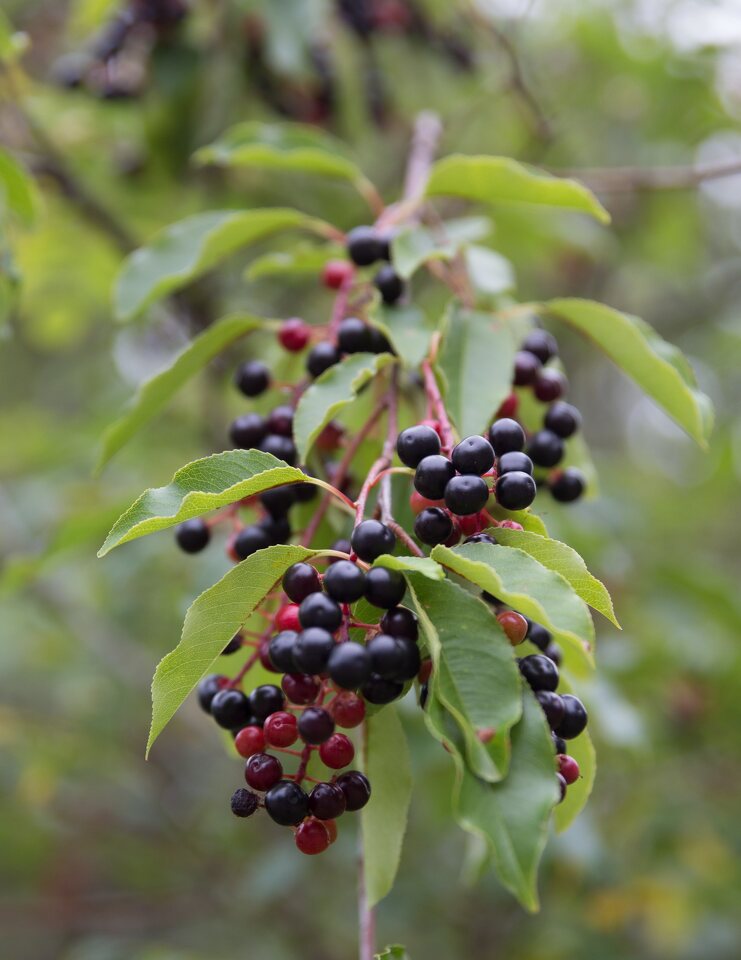
Prunus serotina · vėlyvoji ieva
- Padus serotina
- wild black cherry, rum cherry, mountain black cherry
- Spätblühende Traubenkirsche, Späte Traubenkirsche, Amerikanische Traubenkirsche
- vėlyvoji ieva
- vēlā ieva
- czeremcha amerykańska
The species is widespread and common in North America and South America. Prunus serotina was widely introduced into Western and Central Europe as an ornamental tree in the mid-20th century, where it has become locally naturalized. It has acted as an invasive species there, negatively affecting forest community biodiversity and regeneration.
It was an important food in pre-Columbian Mexico. Edible raw, the fruit is also made into jelly, and the juice can be used as a drink mixer, hence the common name 'rum cherry'. Prunus serotina timber is valuable.
The seeds of black cherries contain cyanogenic glycosides, compounds that can be converted into cyanide, such as amygdalin. These compounds release hydrogen cyanide when the seed is ground or minced, which releases enzymes that break down the compounds. In contrast, although the flesh of cherries also contains these compounds, it does not contain the enzymes needed to produce cyanide, so the flesh is safe to eat. The foliage, particularly when wilted, also contains cyanogenic glycosides, which convert to hydrogen cyanide if eaten by animals.
Lietuvoje auginama kaip dekoratyvinis augalas, paskelbta invazine rūšimi. Natūraliai auga Šiaurės ir Pietų Amerikoje. Uogas įmanoma valgyti, kauliukai nuodingi.
‥
0 comments
Add a comment